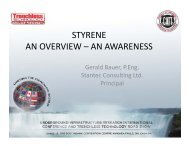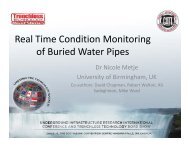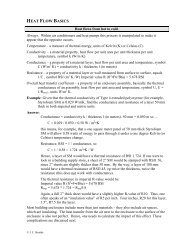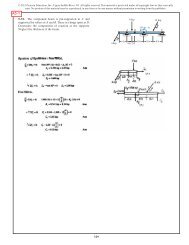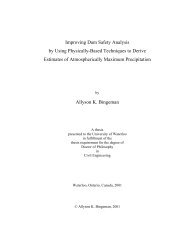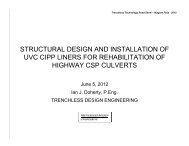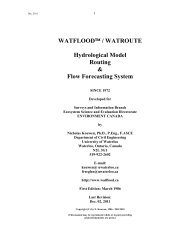Planning Horizontal Directional Drilling for Pipeline Construction
Planning Horizontal Directional Drilling for Pipeline Construction
Planning Horizontal Directional Drilling for Pipeline Construction
Create successful ePaper yourself
Turn your PDF publications into a flip-book with our unique Google optimized e-Paper software.
items will increase the final bore diameter and will dictate the minimum radius of<br />
curvature.<br />
8.4.3 Coating<br />
As mentioned in Section 4.3, one operational risk that should be addressed is<br />
external corrosion due to damaged pipeline coatings. Protective coatings can often<br />
be damaged during pull through by the <strong>for</strong>ces involved, and by contact with soils,<br />
rocks, and other debris present in the bore hole. The consequences of coating<br />
damage are multiplied by the nature of the HDD method. A pipeline installed by<br />
HDD will not be readily accessible to make future pipeline or coating repairs.<br />
External pipe coatings <strong>for</strong> HDDs must be carefully selected to minimize the risks.<br />
Given the potential <strong>for</strong> coating damage it may be necessary to select a different<br />
coating system <strong>for</strong> the HDD section(s) of a pipeline.<br />
Coatings used <strong>for</strong> HDD drag sections must be flexible and have sufficient<br />
abrasion resistance to limit damage. The economic and environmental<br />
consequences of a future failure are significant. Cathodic protection (CP)<br />
compatible coatings will allow protective current to reach the pipe regardless of<br />
any damage to the coating. Certain coatings such as single or double layer<br />
extruded polyethylene, or polyethylene tape, can shield cathodic protection<br />
current when damaged. Such coatings should be avoided on HDD projects.<br />
Often the most suitable coatings <strong>for</strong> an HDD project are Fusion Bond Epoxy<br />
(FBE) or similar liquid coatings. An additional layer of pipe coating should be<br />
applied <strong>for</strong> abrasive protection. This layer is often referred to as the abrasion<br />
resistant layer or the sacrificial layer. The exact type of coating should be selected<br />
based on a number of factors including the amount of abrasion expected.<br />
The selection of field applied joint coatings also requires careful attention. It is<br />
recommended that the joint coatings be liquid epoxies with similar properties,<br />
especially abrasion resistance, as the main plant applied coating. Since the joint<br />
coatings are field applied, proper application methods, qualified<br />
workers/applicators, and qualified coating inspectors are recommended.<br />
In addition to inspecting the coatings during the actual application process, a<br />
careful visual inspection should be made of the first few pipe joints at the exit<br />
location. Often these leading joints are believed to receive the most damage. If<br />
these joints are in good condition it is likely that the remaining coating is in<br />
similar, or even better condition.<br />
Another method of inspection is an in situ electrical method to determine the<br />
coating resistance. A competent cathodic protection technician can complete this<br />
work. This type of inspection can provide a relative understanding of the coatings<br />
efficiency. The field CP measurements must be done prior to completing any tiein<br />
welds to the rest of the overland pipeline. There<strong>for</strong>e, the timing of this work<br />
must be carefully coordinated.<br />
September 2004 <strong>Planning</strong> <strong>Horizontal</strong> <strong>Directional</strong> <strong>Drilling</strong> <strong>for</strong> <strong>Pipeline</strong> <strong>Construction</strong> Page 8-4



